Harnessing the Power of Greek Mythology in Psychotherapy
“Song, as you teach it, is not desire, not courtship of something finally attained. Song is reality. Simple, for the god. But when are we simple? When does he pour the Earth and the stars into us? This is not about you, youngster, even if you suddenly grasp it, stammering – it’s not about you at all.”
Rilke’s Sonnets to Orpheus
As psychotherapists, we are constantly seeking new ways to help our clients navigate the complexities of the human experience. One rich source of insight and guidance can be found in the timeless wisdom of Greek mythology. These ancient stories are not just entertaining tales, but powerful allegories that encode deep truths about the psyche, the stages of life, and the path to wholeness. By drawing on archetypal figures and themes from Greek myth, we can help our clients find meaning, perspective, and direction in their own life journeys.
Main Points and Key Ideas:
- Using Greek mythology as a therapeutic tool to explore universal human experiences and struggles.
- Employing mythic allegories as mirrors for clients to reflect on their own life journeys.
- Viewing different stages of life through archetypal figures from mythology.
- Using experiential exercises based on myths to promote healing and self-discovery.
- Exploring the concept of initiation and transformation through ancient mystery cults.
- Applying Jungian concepts such as archetypes, the collective unconscious, and individuation.
- Working with shadow aspects of the psyche, represented by mythological figures.
- Using active imagination, dream analysis, and creative expression in therapy.
- Exploring the balance between rational (Apollonian) and irrational (Dionysian) aspects of the psyche.
- Addressing addiction and midlife transitions through mythological frameworks.
- Using myths to navigate grief and loss, particularly the Demeter and Persephone story.
- Exploring creativity and the artistic process through the myth of Orpheus.
- Addressing transgenerational trauma using the Electra myth as a framework.
- Examining mother-child relationships and family dynamics through myths like Jocasta and Oedipus.
- Employing techniques such as role-playing, guided imagery, and ritual in therapy.
- Using genograms and family mapping to explore intergenerational patterns.
- Incorporating body-based and somatic practices inspired by mythological themes.
- Exploring the concept of the wounded healer in therapy and personal growth.
- Using myths to address issues of identity, self-expression, and personal power.
- Integrating spiritual and psychological perspectives in the therapeutic process.
The Power of Allegory
The Greek myths are filled with vivid characters and dramatic plotlines that speak to universal human experiences. Myth is searching within patterns we see in lives. These mythic patterns can serve as allegorical mirrors for our clients, reflecting back to them the essential nature of their own struggles and potentials.
For example, the story of Persephone’s descent into the underworld and her cyclical return is a profound allegory for the process of psychological renewal. Persephone’s descent is about the parts of ourselves that die when we take them for granted and neglect them. By contemplating Persephone’s journey, clients who are going through a “dark night of the soul” can find hope that spring will come again, and that their time in the depths is a necessary initiation into greater wisdom and empathy.
Stages of Life
Greek mythology also offers a map of the human lifecycle, with different archetypal figures presiding over each stage. The Goddess Gaia, for instance, can be seen as the guardian of infancy and early childhood, when we are completely dependent on the “good enough” holding environment of caregivers. As the Homeric Hymn to Gaia states, “She feeds everyone in the world…Queen of Earth, through you beautiful children, beautiful harvests, come…Farewell, Mother of the Gods, bride of starry Heaven. For my song, life allow me, one my heart loves.” Clients who are new parents, or who are working through wounds from their own early life, can call on Gaia for nurturance and primal security.
Experiential Exercises and Practices
Here are some specific ways to apply the wisdom of Greek mythology in the therapeutic context:
Have clients choose a Greek god, goddess, or hero that they feel especially drawn to or repelled by. Invite them to research the figure’s myths and identify the archetypal themes that resonate with their own lives. Encourage them to dialogue with this figure through journaling, art, or even enactment, exploring what ‘medicine’ the archetype has to offer them.
When clients are going through a major life transition, invoke the myth of Persephone to affirm the natural cycle of descent and return. Invite them to create a ritual or ceremony to honor the necessity of the ‘underworld’ period and call on Persephone’s blessings for the new life that will emerge.
Use the labyrinth as an archetypal image for the individuation journey – the winding path to the center of the self. Have clients draw or walk a labyrinth, reflecting on the twists and turns of their own life story. At the center, encourage them to dialogue with their inner ‘Minotaur’ – the frightening but potentially empowering creature within.
For clients struggling with issues of guilt and responsibility, introduce the Furies or Erinyes, the ancient goddesses who tormented wrongdoers. Examine together how the client’s own inner critic or judge may be hounding them, and explore ways to make amends and achieve self-forgiveness. The Furies can be especially helpful for navigating complicated family dynamics.
Cultivate the capacity for mythic thinking by inviting clients to “dream the myth onward,” imaginatively embellishing and expanding the stories to reveal their personal significance. Encourage them to write their own versions, casting themselves as the protagonist on a hero/ine’s journey of transformation.
By working with these and other mythic motifs, therapists can help clients tap into the archetypal energies and insights that can illuminate their own struggles and triumphs.
The Ancient Greek Mystery Cults: Portals of Initiation and Transformation
In the ancient world, the words “mystery” and “cult” carried a far different meaning than the sinister connotations they’ve acquired in modern times. Rather than referring to dangerous fringe groups or irrational beliefs, the mystery cults were highly respected spiritual traditions that offered initiates profound experiences of personal transformation and divine communion. These secret societies, such as the Eleusinian and Dionysian Mysteries, provided a sacred space for individuals to confront the deepest paradoxes of existence and emerge with a renewed sense of meaning, purpose, and connection to the eternal.
At the heart of the mystery cults was the concept of initiation – the idea that one must undergo a symbolic death and rebirth in order to access higher levels of consciousness and spiritual insight. The rites of passage enacted within these cults were closely guarded secrets, revealed only to those who had undergone extensive preparation and purification. Initiates were sworn to secrecy not out of elitism or exclusivity, but because the potency of the mysteries could only be understood through direct experience. As the philosopher Aristotle wrote, “The initiates are not to learn anything, but to suffer and to have their dispositions altered.”
While the specific details of the mystery rites remain shrouded, tantalizing clues can be gleaned from ancient sources. The Eleusinian Mysteries, held annually in honor of the goddesses Demeter and Persephone, seem to have involved a ritual descent into a subterranean chamber, symbolizing the journey into the underworld. Initiates would spend days in total darkness, fasting and meditating, before being dramatically transported into the light to witness the dawning sun – a powerful allegory for the soul’s movement from ignorance to illumination.
Other accounts suggest that initiates in some cults were subjected to intense paradoxical experiences designed to shatter their ordinary ways of thinking. In the Mithraic Mysteries, for example, it’s said that candidates had to walk across a bridge while being assailed by taunts and jeers from a surrounding crowd. The abuse would take the form of existential paradoxes, such as “You are just a thinking animal that believes it’s a god!” or “You are a bag of meat collecting pain, speeding towards oblivion!” By facing these extreme contradictions head-on, the initiate’s ego would be humbled and broken down, creating an opening for a more expansive, transcendent self to emerge.
This notion of embracing paradox and holding the tension of opposites is a central theme in depth psychology and the individuation process described by Carl Jung. Just as the mystery cults forced initiates to confront the polarities of light and darkness, life and death, humanity and divinity, modern therapeutic practices can help clients wrestle with the contradictory aspects of their own psyche. Techniques like shadow work, active imagination, and dreamwork serve a similar function as the ancient mysteries – they provide a ritual container for exploring the uncharted depths of the soul and integrating the fragmented parts of the self.
Some experiential practices that therapists can use to evoke the transformative power of the mystery cults include:
The Eleusinian Journey:
Preparation: Have the client spend time in quiet reflection, setting an intention for their “initiation” journey. They may fast, meditate, or engage in other purification rituals to create a sense of sacred space and readiness.
Descent: Guide the client through a deep relaxation or hypnotic induction, inviting them to imagine descending into a dark, underground chamber. Use rich sensory detail to evoke the dampness, stillness, and disorientation of the space. Encourage them to sit with any feelings of fear, confusion, or anticipation that arise.
Confrontation: Once the client has settled into the darkness, have them visualize a figure approaching – this may be a personified aspect of their own psyche, a mythic character like Persephone or Dionysus, or a wise elder. Guide them through a dialogue with this figure, asking them to voice their deepest fears, doubts, and existential questions. The figure may respond with cryptic or paradoxical statements, mirroring the mystery of the self.
Revelation: After the confrontation, have the client imagine a glimmer of light appearing in the darkness, gradually growing brighter and brighter until they are suddenly transported into a vast, open space suffused with radiance. This may be a natural setting like a mountaintop or a cosmic/celestial realm. Encourage them to fully absorb the beauty, awe, and expansiveness of this place, letting it fill them with a sense of joy, connection, and liberation.
Integration: Guide the client in reflecting on their journey and discussing any insights, challenges, or breakthroughs they experienced. Help them identify ways to integrate and embody this new perspective in their daily life, creating personally meaningful rituals or practices to keep the “mystery” alive.
Paradox Bridge:
Set-up:
Create a physical representation of a bridge in the therapy space using simple props like yoga mats, cushions, or tape on the floor. Explain to the client that they will be crossing this “bridge” while holding in mind a series of paradoxical statements.
Paradox Contemplation:
Offer the client a set of koans, riddles, or contradictory aphorisms to contemplate before beginning their journey. These could be classic Zen koans like “What is the sound of one hand clapping?”, alchemical paradoxes like “dissolve and coagulate,” or personalized statements that challenge the client’s specific limiting beliefs or identities.
Crossing:
As the client slowly walks across the bridge, have them recite the paradoxes out loud, letting the contradictory ideas wash over them. Encourage them to notice any physical sensations, emotions, or thoughts that arise without trying to resolve or make sense of them.
Threshold:
When the client reaches the middle of the bridge, have them pause and close their eyes. Ask them to imagine all their fixed ideas and identities falling away into the void beneath them, leaving them “empty” and receptive.
Resolution:
As the client completes their crossing, have them step into a new “identity” or state of being on the other side. This could be a mythic archetype, a felt sense, or a symbolic representation of their own potential. Guide them in embodying this new way of being, anchoring it in their posture, breath, and energy.
Processing:
Discuss with the client what it was like to hold the tension of paradox and cross the threshold into a new state. How did it feel to let go of fixed identities? What qualities or capacities did they connect with on the other side? Brainstorm ways to continue “crossing the bridge” in their daily lives when they feel stuck or limited.
Dionysian Dialogues:
Invocation:
Begin by invoking the presence of Dionysus, god of ecstasy, chaos, and transformation. This could involve using imagery, music, or movement to shift the energy of the space and open up a more fluid, spontaneous way of being.
Embodiment:
Invite the client to “become” Dionysus, taking on the posture, breath, and energy of the god. Encourage them to let go of self-consciousness and allow themselves to be moved by the primal, creative force that Dionysus represents.
Dialogue:
While in this embodied state, have the client engage in a free-flowing dialogue with you, speaking from the perspective of Dionysus. Ask questions that challenge the client’s habitual ways of thinking and being, evoking the destabilizing yet liberating spirit of the god. For example: “What part of your life is crying out for ecstasy and release?” “What would it feel like to let go of control and surrender to the mystery?” “How can you honor both the destructive and creative aspects of your nature?”
Mirroring:
Reflect back to the client the key themes, images, and insights that emerge from the dialogue, amplifying the transformative power of their words. Help them see the ways in which their own inner “Dionysus” is calling them to break free of limiting patterns and embrace a more wild, authentic way of being.
Homework:
Give the client specific practices to continue evoking the Dionysian energy in their daily lives. This could include ecstatic dance, spontaneous art-making, spending time in nature, or other activities that promote a sense of freedom, creativity, and embodiment.
Ultimately, the mystery cults remind us of the transformative power of direct experience and the necessity of embracing life’s paradoxes on the path to wholeness. They challenge us to move beyond the narrow confines of the rational mind and open ourselves to the ineffable mysteries at the heart of existence. By creating therapeutic containers that evoke the sacred intensity of the ancient rites, we can help clients forge a more initimate relationship with the depths of their own souls and the numinous dimensions of reality. As the poet Pindar wrote of the Eleusinian Mysteries, “Blessed is he who, having seen these rites, undertakes the way beneath the Earth. He knows the end of life, as well as its divinely granted beginning.”
In a world that often seems fractured and devoid of deeper meaning, the enduring wisdom of the mystery cults invites us to reconnect with the perennial springs of spiritual renewal and radical transformation. By honoring the archetype of initiation and the sacred mystery at the core of the psyche, we open ourselves to the possibility of a more enchanted, ensouled existence – one in which the divine is not a remote abstraction, but an immanent presence that shimmers through all things, waiting to be recognized and reclaimed. This, perhaps, is the real secret that the ancient mysteries have to teach us: that true initiation is not a single event, but an ever-unfolding process of becoming more fully and fearlessly ourselves, in all our glorious contradictions and complexity. As the Sufi poet Rumi writes, “The wound is the place where the Light enters you.” May we all find the courage to embrace our wounds and follow the light of the mysteries, wherever they may lead us on the winding path to wholeness.
Unleashing the Power of Dionysus
“Blessed is he who has seen these things; he who is uninitiated and has no part in them, never has lot of like good things once he is dead, down in the darkness and gloom.” From the Homeric Hymn to Demeter
The ancient Greek god Dionysus, also known as Bacchus to the Romans, was a complex and paradoxical figure associated with wine, fertility, theater, and religious ecstasy. But before his mythology was tamed and civilized by the Romans, Dionysus had a much wilder, more primal aspect. He was the god of raw nature, of madness and frenzy, the one who compelled his followers to tear animals (and sometimes humans) apart and eat their flesh raw in orgiastic rituals.
This untamed side of Dionysus points to a potent psychological truth – that when the masculine forces of logic, order and civilization become too repressive, the natural, feminine and unconscious energies will inevitably rise up in rebellion. The Dionysian archetype represents those moments in an individual’s life or a society’s history when the irrational, the instinctual and the ecstatic can no longer be contained and burst through the neat confines of the status quo.
The Bacchanalia
The secretive and often transgressive rituals devoted to Dionysus in ancient Rome – embodied this eruption of the repressed feminine. During the Bacchanals, women (and some men) would leave behind their respectable roles as wives and mothers, don the skin of a fawn, grasp the ritual thyrsus staff and run wild in the woods, hair streaming and voices shrieking the name of the god. In their ecstatic revelry, normal social constraints fell away and a direct communion with the divine could be achieved.
While this gave the women a rare taste of freedom and empowerment, it also could lead to devastation when unchecked. In Euripides’ tragedy The Bacchae, Pentheus, the young king of Thebes, tries to outlaw the worship of Dionysus. In retaliation, the god lures Pentheus to spy on the Maenads in their nighttime rites.
Whipped into a frenzy, the women spot him, and led by his own mother, they tear him limb from limb, not recognizing him as kin.
This horrifying tale is a metaphor for how the ego, in refusing the call of the unconscious, may ultimately be torn asunder by the very forces it tries to repress. It is not a simple matter of surrendering to Dionysian chaos and ecstasy, but of consciously negotiating and integrating these energies.
Confronting Addiction
In a therapeutic context, the archetype of Dionysus can help clients navigate the wilder, more chaotic stretches of their life journeys and come to terms with shadow aspects of their nature. For example, when a client is battling substance abuse or other addictions, exploring the Dionysian archetype can yield insight. What deeper yearnings are being anesthetized? What natural instincts are being distorted? By understanding the Dionysian roots of intoxication, its pleasures and perils, clients may find more conscious ways to engage the numinous.
Navigating Midlife Passages
In myth, Dionysus is often depicted as androgynous youth or as bearded, mature man – never as elder. His energy is about radical transformation, the surge of the life force in its masculine and feminine expressions. This maps well onto the midlife passage, when old identities break down and primal energies resurface. Dialoguing with the Dionysian can unleash a potent, fecund wildness that, contained and directed, fuels vibrant creativity and fresh life.
Embodying the Ecstatic
In our left-brain, digitally mediated culture, many people feel painfully cut off from their bodies and sensual experience. The Dionysian path is one of direct communion with nature, with the body, with music and dance. Clients can be encouraged to find healthy, protected ways to “lose themselves” whether through expressive arts, “authentic movement” practices, chanting, drumming, or sacred drama. By ritually engaging the Dionysian, we reclaim our capacity for awe, release, and mystic participation.
Honoring the Shadow
Dionysus earned the epithet Omistis, “eater of raw flesh,” for presiding over the sparagmos, or ritual dismemberment of animals and people. This grisly practice actually held a sacred logic – by tearing the god to pieces, the worshippers could reintegrate his spirit. Psychologically, we sometimes need to dis-member the civilized personas we have carefully constructed in order to re-member our authentic, whole selves. We must be willing to confront the unruly, “uncooked” aspects of our psyches and wrestle them towards consciousness.
Experiential Exercises
Here are some experiential suggestions for engaging the Dionysian therapeutically:
Invite the client to personify Dionysus, dialoguing with him through a mask, puppet, or shamanic journey. What gifts does he offer? What does he ask in return? Guide the client to make an agreement with Dionysus that respects his wildness while establishing sacred boundaries.
Suggest the client spend more time in wilderness settings, practicing sensory awareness and somatic attunement. They might sit with a tree, identifying with its rootedness, or dance freely in a secluded meadow. The point is to cultivate a visceral, reciprocal relationship with the otherness of nature.
Encourage the client to attend or participate in collective rituals of abandon – ecstatic dance gatherings, Sufi whirling ceremonies, Pagan festivals. The Burning Man gathering is a modern Dionysian playground. The key is to have a “ritual container” that evokes the Dionysian while protecting against literal wildness.
Assign “homework” of planned transgressions – invite the client to break minor taboos in controlled ways. This could be something as simple as eating dessert before dinner or wearing a “forbidden” color. By consciously playing with social constraints, we gain more flexibility and choice.
Make creative use of Dionysian symbols and images – grapes, wine, vines, masks, drums, the thyrsus, fawn skins. The client might sculpt their own thyrsus and use it in a private dance ritual. Or make a collage of Bacchanalian images to evoke the Dionysian mood. Working with the god’s emblems can summon his healing wildness.
As we engage the Dionysian archetype, we must remember the dual faces of the god – he is Lysios, “the loosener,” who frees us from the bonds of constraint and also Dionysos Katharsios, “he who purifies,” leading us to catharsis and renewal. To reap his gifts, we must be willing to ride the edge of order and chaos, to let our old forms dissolve for the sake of new life. Dionysos’s represents a brutal transformation, of dismembering with the growth and rebirth of nature on the other side. By dancing with this dynamic archetype, we embrace the creative destruction intrinsic to the individuation journey.
Theseus and the Labyrinth: Navigating the Hero’s Journey
“For this is the way a man comes down to the House of Hades, by the winding path of wandering.”
– Homer, The Odyssey
The story of Theseus and the Minotaur reflects key Jungian concepts such as the confrontation with the shadow, the descent into the unconscious, and the archetype of initiation. For Jung, the labyrinth represents the winding path of individuation, with its blind alleys, twists and turns. Theseus must venture into this dark unknown to face the Minotaur – a potent symbol of the rejected, untamed aspects of the psyche that guard the treasures of the deep self.
Jung saw myths as “original revelations of the preconscious psyche,” and used amplification to unpack their symbolic meanings. Techniques likes active imagination, dream analysis and creative expression can help clients engage experientially with the archetypes constellated in the myth. The goal is not to rationally interpret but to emotionally and somatically encounter the numinous figures, re-membering their ancestral power.
Some key Jungian ideas reflected in the myth:
The Shadow:
The Minotaur represents the personal and collective shadow – those qualities and impulses we exile out of fear or shame. Theseus’ battle evokes the critical encounter with the shadow as an initiatory ordeal.
Anima/Animus:
Ariadne and her thread symbolize the inner feminine (anima) as helpful guide in navigating the labyrinth of the unconscious. Her bond with Theseus suggests the sacred marriage of masculine and feminine required for wholeness.
The Self:
The journey into the labyrinth and back out to the light reflects the individuation process of connecting the ego to the larger Self – the central, ordering principle of the psyche. Theseus is a hero because he dares the leap into the unknown depths to reclaim his true inheritance.
Demeter and Persephone: Grieving the Lost Maiden
“Apart from Demeter, no one could rouse Persephone, until at last out of the earth came Hecate, holding a lighted torch in her hands. Ever since that day, Hecate has always been attendant and companion to Persephone.”
From the Homeric Hymn to Demeter
The Eleusinian Mysteries, the most famous of the ancient Greek mystery cults, enacted the sacred story of Demeter and Persephone in secret rites that initiated participants into the renewal mysteries of the Earth. At the heart of the ritual was a simulation of Persephone’s descent and return – a poignant enactment of the soul’s journey through the underworld of grief and its restoration to life and light.
This myth embodies archetypal themes of profound relevance to Jungian therapy – the Great Mother, the eternal cycle of loss and renewal, the necessity of the “night sea journey” in service to new life. Demeter and Persephone represent the light and dark aspects of the mother archetype, the nurturing and devouring qualities of the unconscious.
From a Jungian perspective, Demeter and Persephone’s story maps the process of working through the mother complex – the imperative to relinquish old attachments in order to forge a strong ego-Self connection. The myth also provides an archetypal lens for navigating grief – the need to fully descend into the pain of loss in order to be reborn into meaning. Some key concepts:
Mother Complex:
Persephone’s abduction reflects the psychic crisis that occurs when the Mother (personal and archetypal) will not release the maiden into adult sexuality and selfhood. Demeter and Persephone must each individuate for the cycle to turn.
Unio Mentalis:
The mystery rites culminated in the revelation of a single ear of wheat – a symbol of the inner union of masculine and feminine, conscious and unconscious exemplified by Persephone’s sacred marriage to Hades.
Night Sea Journey:
Persephone’s descent into the underworld represents the perilous sea journey or nekia required to transform the psyche. Therapy can provide a “holding environment” much like Demeter’s temple for this rite of passage.
Athena and Arachne: Embracing the Weaver Within
“A spider’s web, alight with dew,/Is in itself a lovely thing,/But lovelier still when light shines through/And gems the gossamer with rainbow hues.”
From The Myrmidons by Aeschylus
The contest of Athena and Arachne, immortalized in Ovid’s Metamorphoses, has long been interpreted as a metaphor for the power and perils of human creativity. Arachne’s masterful web depicts the gods’ erotic transgressions with bold realism, while Athena’s tapestry exalts their stately triumphs and glories. When Athena tears Arachne’s irreverent work to shreds, it is the familiar story of the superego censoring the subversive truths of the unconscious.
Yet Arachne’s metamorphosis into a spider, eternally spinning, suggests a liberating movement from product to process, ego achievement to soul-making. The spider is a frequent symbol of the anima, the inner feminine that weaves the filaments of psyche into art. By accessing her instinctual nature, Arachne also participates in the primal act of creation, the endless weaving and unweaving of the numinous web.
Some key insights from a Jungian perspective:
Creative Instinct:
Arachne’s inborn genius reflects the natural urge of the psyche to create, to spin the raw materials of experience into meaning. Her tapestries spring from an inner necessity beyond egoic concerns of glory.
Anima Mundi:
The World Soul or anima mundi is the mysterious “weaver” behind nature’s loom, the intelligent fabric in which all beings are embedded. Spider Grandmother myths point to this archetypal feminine that spins the universe into being.
Enantiodromia:
Arachne’s transfiguration into a spider exemplifies the Jungian concept of enantiodromia, or the tendency of something to turn into its opposite when taken to an extreme. Athena’s attempt to destroy Arachne only immortalizes her.
In working with this myth, therapists can use techniques such as active imagination, dream work and textile arts to help clients attune to their own “inner weaver” and develop the negative capacity required for authentic creation. By learning to see through Arachne’s eyes – multiple, fractal, attuned to subtlest vibration – we perceive the beauty of the whole in each luminous part. In the words of poet Rainer Maria Rilke: “All I want is to speak/with the primal voice/which spoke spells/long before languages began.”
Dionysus and Apollo: Balancing the Rational and Ecstatic
“Men dance and women follow the pipes when the solemn holy mysteries of the god Dionysus are performed.”
Inscription from the ruins of a Dionysian temple at Mende
Ancient shrines to Dionysus and Apollo were often located in close proximity, reflecting their complementary roles as lords of the irrational and rational, nature and culture, instinct and order. Worship of Dionysus involved orgiastic rituals that released participants from the constraints of the ego, while Apollonian practice emphasized purification, restraint and self-knowledge in service to an ideal. Yet both gods united in mythic acts of healing, as when they jointly purified the matricide Orestes, revealing the synergy of their energies.
From a Jungian perspective, Dionysus and Apollo represent the play of opposites in the psyche – the chthonic depths and solar heights, the oceanic bliss of the uroboros and the heroic striving of the ego. The task of individuation is to consciously engage this polarity, developing fluency in both modes.
Jung saw Dionysian experience as essential for releasing repressions, connecting to the collective unconscious and dissolving calcified identities. But he also recognized the danger of possession by archetypal forces without the counterbalance of Apollonian lucidity. The therapeutic process must honor both – providing a space for cathartic regression and a crucible for transformation.
Some key Jungian themes reflected in this pairing:
The Union of Opposites: Jung’s central concept of the coincidentia oppositorum – the unity of opposites – is embodied in the tense, mythic relationship of the two gods. Their “alchemical marriage” represents the goal of individuation.
Participation Mystique: Dionysian worship exemplifies participation mystique, a feeling of mystical oneness with nature and the group. Therapy can provide a “rite of passage” back to this undifferentiated state in service to greater consciousness.
The Transcendental Function: Apollonian and Dionysian modes work together to facilitate the emergence of the transcendental function, that symbol-making capacity which bridges conscious and unconscious and births new attitudes and possibilities.
In therapy, clients can be encouraged to develop practices that engage both capacities – expressive arts and somatic release alongside meditation and shadow work. By learning to ride the edge of chaos and order, surrendering strategically to the “divine madness” of the unconscious, we midwife our own healing – that miracle of regeneration where “out of two comes a third,” in Jung’s words. For
“the true subject of these great rites isalways a pair of opposites, which signify totality.”
Prometheus and Pandora: Stealing Fire, Unleashing Hope
“Only Hope was left within her unbreakable house, she remained under the lip of the jar, and did not fly away. Before [she could], Pandora replaced the lid of the jar. This was the will of aegis-bearing Zeus the Cloudgatherer.”
Hesiod, Works and Days
The myths of Prometheus and Pandora are origin stories that explain the roots of the human condition – our capacity for technical skill and rebelliousness, our vulnerability to loss and death, our unquenchable hunger for meaning. Prometheus’ theft of fire represents the birth of consciousness itself, that Promethean/Luciferian impulse to steal light from the gods and excel our nature. But like Adam and Eve, this act also exiles us from the eternal and implicates us in struggle and mortality.
Pandora’s opening of the fateful jar unleashes the sum of human suffering, yet also releases its curious complement – hope, that “thing with feathers” that sings the tune without words and never stops at all. In trapping Hope under the lip of the jar, Zeus ensures that we will continually seek it, stoking the fires of becoming despite the inevitable burns. Pandora’s legacy is this restless meliorism, this dappled vision that keeps us ever chasing the horizon of the ideal.
From a Jungian view, Prometheus and Pandora represent key archetypes of the individuation journey. Prometheus embodies the ego’s heroic striving to differentiate from the unconscious, that necessary inflation that seeds further development. Pandora enacts the encounter with the shadow, the integration of life’s darkness as essential to growth.
Some important motifs to consider:
The Wounded Healer:
Prometheus’ torment is an image of the primal wound that makes us human – our awareness of finitude, the “god-shaped hole.” But in learning to eat his pain, he also becomes the archetypal Wounded Healer who can use his own suffering in service to others.
The Lure of the Feminine:
Pandora is created as recompense for Prometheus’ theft, the beautiful evil” that bewitches through eros. She personifies the anima, that inner feminine which mediates the mysteries of the unconscious and leads us into deeper dimensions of being.
The Philosopher’s Stone:
In alchemical terms, Prometheus’ fire and Pandora’s jar combine to represent the stages of the Great Work – dissolution in the prima materia and coagulation of the philosopher’s stone, that “orphan stone” which turns lead into gold.
In working with these myths, therapists can help clients attune to their inner Prometheus – that vital spark of agency and purpose, the call to “dream the myth onward.” By engaging the reality of suffering as Pandora did, we move beyond naivete and inflation into true wisdom. For only in the secret alliance of Hope and Regret can we transform our lives into “jars of fire,” in the words of poet Catherine Phil MacCarthy. Only in learning to love our fate can we dare to revision it, steal it back from the gods.
We need Prometheus to rebel against the way things are; we need Pandora to hold the full paradox of how they must be. We need both fire and tears, the wound and the healing vision, the holy longing and the humble art. In this coniunctio of spirit and soul, the gold is found – that tiny, infinite thing at the bottom of the jar, that feather of possibility that will not be weighted down.
So may we all become such skilful thieves of fire, learning to spin the straw of our days into the gold of presence, warming our hands at the slow forge of the heart. And may we apprentice ourselves to radical hope, that winged messenger which leads us limping, exulting, brokenly beautiful down the spiral path of a life that endlessly opens.
Awakening the Muse of Orpheus
The ancient Greek myth of Orpheus, the divinely gifted poet and musician, offers a rich archetypal lens for understanding the creative process and the power of the imagination in both art and life. By delving into the symbology of Orpheus’ journey – his enchantment of the natural world, his descent into the underworld to retrieve his lost bride, and his ultimate dismemberment and redemption – we can gain insight into the initiatory nature of the creative act and the perils and rewards of courting the Muse.
In a therapeutic context, the Orphic mysteries can serve as a map for clients seeking to deepen their relationship to the imaginal realm and embody their own mythic identities. By engaging experientially with the key motifs of the Orpheus story, clients can reconnect with the wellsprings of inspiration, navigate the shadows of the psyche, and ultimately birth themselves anew through creative expression.
The Lineage of Inspiration
To fully appreciate the significance of Orpheus, we must first understand his mythic genealogy. Orpheus was said to be the son of the Muse Calliope, the “Queen of Epic Poetry,” and the grandson of Mnemosyne, the Titan goddess of Memory. The nine Muses were born from the union of Mnemosyne and Zeus, after the two lay together for nine consecutive nights.
This genealogy offers a profound insight into the nature of artistic creation. Memory, in this conception, is not merely the faculty of recalling the past, but the archetypal ground of being from which all forms arise. Memory is the tapestry holding the future and the past together. The Muses, then, are the intermediaries between this eternal, collective Memory and the individual artist or visionary.
They are the wellsprings of inspiration that sing through the open and attentive heart, bringing the numinous energies of the timeless into the manifest, time-bound world. When we invoke the Muses, as poets have done for millennia, we are opening ourselves to the archetypal dimension of the psyche, surrendering to the autonomous creative impulses arising from the unconscious.
Courting the Muse
The figure of Orpheus, born from a Muse, also reveals the essentially erotic nature of the creative act. Inspiration is a coupling, a conceiving – the Muse “in-spires,” or breathes into, the receptive artist. It is a seduction, a ravishment, an ecstatic union. We see this reflected in Orpheus’ legendary ability to enchant the whole of creation with his music – from wild beasts to rocks and trees. His lyre, bestowed by his father Apollo, is an instrument of Eros, evoking rapture and longing in all who hear it.
This speaks to the deep intoxication of artistic transport – the sense of being seized by something larger than oneself, of becoming a vessel for divine energies. It is the poet “beside himself,” the actor “taken over” by his character, the painter in fevered trance. We lose ourselves to be found by the Gods. Yet Orpheus also retains his own will and agency, skillfully plucking the lyre strings. The artist is both lover and beloved, both subject and object in the dance of creation.
The Nekyia
Paradoxically, this ecstatic ascent into imaginal realms is mirrored by a descent into the underworld of the unconscious. In the Orpheus myth, this is reflected in his journey to the realm of Hades to retrieve his dead wife (and muse) Eurydice. Grieving and bereft, Orpheus’ lyre opens the gates of the underworld, as even the shades and guardians of that grim realm are enchanted. He wins Eurydice’s release, but in his impatience to see her, he breaks Hades’ injunction not to look back until they have returned to the land of the living. With that backward glance, he loses her forever to the world below.
Psychologically, this speaks to the necessary confrontation with loss, limitation and mortality that the artist – and each of us – must undergo. We cannot create from a place of naivete or inflation, but must first “die” to our fantasies of omnipotence and perfectionism. In courting the Muse, we will inevitably be disappointed, as she always retains her essential mystery, her ungraspable otherness. She is a visitor from beyond, not a possession. In seeking to “capture” her, we lose her.
The true artist (and true lover) learns to live in the tension between presence and absence, plenitude and longing. Eurydice is always receding back into the underworld – she is the muse in her elusive, veiled form, the anima as Persephone. To love her, to sing from that bittersweet truth, is the initiatory wound that makes us fully human even as it breaks us open to the divine.
The Sparagmos
Orpheus’ journey culminates in his own death at the hands of the Maenads, the frenzied female followers of Dionysos. Enraged, some say, by Orpheus’ exclusive devotion to his lost Eurydice, or his disdain for their orgiastic rites, the Maenads savagely dismember the poet, tearing him limb from limb in an act of ritual sparagmos. Yet even beheaded, Orpheus’ severed head continues to sing as it floats downriver to the island of Lesvos, where it becomes an oracular site, offering prophecy to those who seek it.
The sparagmos enacts the psychic cost of the imaginal journey – the dissolution and disintegration of the old self-concept that creativity demands. To truly enter the Dionysian realm of inspiration, we must surrender our illusory unity, our neatly bounded identity. We must allow ourselves to come apart, trusting that a deeper, truer gestalt will assemble from the shards.
In the therapeutic space, I sometimes invite clients to imaginally undergo a ritual of creative dismemberment. This might take the form of tearing up a poem or painting that feels “precious,” or exploring the sensations of falling apart through authentic movement or vocal sounding. By befriending the Maenads within, clients learn to tolerate the chaos and destruction intrinsic to growth and transformation. They contact the ecstatic death-rebirth mysteries at the core of psyche.
The lyre of Orpheus, that sublimely unifying instrument, is ultimately placed in the heavens as the constellation of the Pleiades – a cosmic symbol of inspiration’s redemptive power. Though the artist, the individual ego, may be torn asunder, the song endures. The personal anguish and travail of the creative process is revealed to be a sacred participation in the eternal music of the spheres. We find the myth is not about us, but is singing us. In the words of Rilke’s sonnet to Orpheus:
“Song, as you teach it, is not desire,
not courtship of something finally attained.
Song is reality. Simple, for the god.
But when are we simple? When does he pour
the Earth and the stars into us?
This is not about you, youngster,
even if you suddenly grasp it, stammering – it’s not about you at all.”
-Ranier Maria Rilke
In the end, the way of Orpheus is the path of initiation into the imaginal mysteries of psyche. To embark on this journey, we must be willing to dissolve the boundaries of ego, to surrender to the ineffable source of inspiration, to sing from the wounds of love and loss. We must learn to harness the divine madness of enthusiasm, while tempering it with the humble discipline of the craftsman. We must yield to our own dismemberment and rebirth, trusting in the ever-renewing power of the mythic imagination.
By working with the archetypal motifs of this myth, therapists and clients alike can restore a vital relationship to the Muses and the Great Memory that sings the world into being. In the place where art-making and soul-making converge, we midwife new ways of being and seeing, transforming waking dream into healing offering. For it is imagination, in the end, that can carry us beyond the limitations of the personal into the realm of the transpersonal. The aim is not to enact a private fantasy or catharsis, but to “remake the world according to the impulses and the patterns in that Great Mind,” as Yeats says.
When Orpheus sings, the cosmos remembers itself and begins to dance – each creature finding its unique place in the pattern that includes them all. May we, too, lend our voices to that pattern, apprenticing ourselves to the myth that dreams us onward, the song that will not let the world forget its soul. May we, too, ascend and descend on the poet’s lyre, practicing the continual arts of memory, desire, and renewal. For in the end, it is through honoring and embodying such images that we weave both personal and collective healing, one shimmering thread at a time.
Embodying Electra’s Journey in Therapy
The ancient Greek myth of Electra, immortalized in the tragic plays of Aeschylus, Sophocles and Euripides, speaks to the wrenching legacy of transgenerational trauma and the arduous path to healing and empowerment. As the daughter of Agamemnon and Clytemnestra, Electra is heir to a dynasty rife with betrayal, vengeance and bloodshed. Her father sacrificed her sister Iphigenia to appease the gods; her mother then murdered him upon his return from Troy, with the help of her lover Aegisthus. Electra’s brother Orestes slays their mother to avenge their father, only to be hounded by the Furies.
This dizzying web of familial violence can feel all too resonant for clients wrestling with the aftermath of intergenerational abuse, addiction or dysfunction. Like Electra, they may feel torn between loyalty to a wounded parent and outrage at their crimes; trapped in a dizzying cycle of trauma reenactment; and hungry to end the curse and forge a self beyond the family fate.
This Electra models the alchemy of transmuting trauma into transformation. She breaks the compulsive chain of “an eye for an eye” and pioneers a restorative justice, enlisting the community to weigh the family’s tangled history with both accountability and compassion. She looks unflinchingly at the “long lines of family trouble” – the ghosts of her foremothers Iphigenia, Helen, Pelopia – while also reclaiming her power to rewrite the script.
Therapy Exercises for Family Analysis
As a therapist, I have found it enormously potent to invite clients to imaginally step into Electra’s role and re-vision their own family trials. Some examples of how this myth can be used:
Have the client make a genogram or “family map” going back at least three generations. Note any patterns of trauma, mental illness, substance abuse, domestic violence etc. Then ask the client to imagine gathering the whole clan – perpetrators and victims alike – in an imaginal courtroom to give testimony, as Electra does. What does each person/ghost have to say? How has one generation’s wounds conditioned the next? Let the client literally speak each part.
After witnessing the mosaic of stories, have the client, as Electra, render a judgment. But rather than condemnation or exoneration, guide them to name the complex systemic and intergenerational factors that shaped the dysfunction. Ask what “clean and new” legacy they wish to forge in contrast.
Invite the client to ritually enact Electra’s releasing of Orestes – laying hands on an effigy or proxy and offering words of both accountability and liberation, saying perhaps “I release you to make your own choices” or “the curse stops here.” Unpack how it feels to claim that moral authority.
Celebrate with a rite of purification – anointing, smudging, immersion in water – to mark the shift from pollution to absolution, stagnation to flow. Invite the client to make vows about the new relational/ancestral lineage they are birthing.
Ask the client to dialogue with an imaginal Council of Wise Elders (like the Furies turned Eumenides) about how to deal with perpetrator ancestors or parents compassionately without minimizing the harm done. Let them seek guidance on protection, boundaries and forgiveness.
Ultimately, Electra’s story affirms that healing ancestral trauma is not a solo hero’s journey, but one that requires the willingness of the collective – the family and community – to break the silence, bear witness, and demand change. By metabolizing the pain of the past, we can begin to unwind the karmic knots that bind, one mindful choice at a time.
In guiding clients to embody the archetype of the Wounded Healer, we empower them to alchemize their devastating inheritance into sacred medicine for all. We dis-spell the curse by spelling it out – giving it a new meaning, a new possibility. In the place where abuse and neglect reigned, we revive an ethic of dignity, accountability and care.
This is Electra’s gift: to spark the revolution in our marrow, and to remind us that the hand dealt is not the hand played. May we, too, find the fierce compassion to say “This far and no further. The future is ours to forge.” May we, too, grow the courage and clarity to judge our legacies justly, and to free ourselves and our beloveds to walk in beauty and truth.
Jocasta: Reclaiming the Rejected Mother in Therapy
“She feeds everyone in the world…Queen of Earth, through you beautiful children, beautiful harvests, come…Farewell, Mother of the Gods, bride of starry Heaven. For my song, life allow me, one my heart loves.” Homeric Hymn to Gaia
The myth of Oedipus, immortalized in Sophocles’ timeless tragedy, has cast a long shadow over the Western psyche. Sigmund Freud famously drew on the tale to formulate his theory of the “Oedipus complex,” positing the son’s unconscious desire for the mother as the central conflict of human development.
Yet in focusing so intently on Oedipus’ drama, Freud – and much of the psychological discourse since – has largely neglected the perspective of Jocasta, Oedipus’ mother and wife. What might her experience reveal about the deeper layers of this iconic story?
Jocasta’s myth invites us to venture into this charged territory with compassion and discernment. It demands that we wrestle with the Jungian reality of the incest archetype – not as a literal transgression, but as a symbol of the ego’s need to reconnect with its origins in the unconscious, the “lost bride” of the soul.
Therapy Exercises for Mothers
How, then, can we support clients (and ourselves) to engage the Jocasta archetype constructively? Some suggestions:
Invite clients to “tell Jocasta’s story” from her imaginal point of view. Fill in the gaps in Jocasta’s journey through writing, art or role-play. By empathizing with her hopes, desires and grief, clients connect with the “wounded mother” in their own psyche.
Explore dreams and fantasies related to the lost or longed-for child. The intensity of these images likely points to early deficits and disrupted bonds. Help clients to feel the full depth of that primal loss and rage in a protected space.
Unpack the client’s internalized myths of motherhood. How has their family and culture shaped their sense of maternal power, sexuality and guilt? What unconscious fantasies of tikkun might they be projecting onto their real relationships?
Look for safe, symbolic ways for clients to satisfy unmet needs for nurturance and intimacy – through creativity, spirituality, therapy itself as a “maternal womb.” Help them build an internal mother who can hold them in their wholeness.
Differentiate generational roles and needs clearly. If the client is a parent, explore how their own wounds might be impacting their children. Coach direct communication and strong interpersonal boundaries to prevent enmeshment.
Ultimately, by descending into the underworld of the rejected feminine, we can reclaim the treasures trapped there – the assertive eros, fierce protectiveness, and unbroken longing of the mother. In embracing Jocasta’s darkness, we affirm that her story belongs to us all, regardless of gender. We are all tasked with re-membering the fragmented parts of the Great Mother and re-wedding our orphaned hearts to the sacred whole.
This is the essence of tikkun from a Jungian lens – not a futile attempt to undo the past, but a commitment to the ongoing repair and regeneration of the psyche.
As we witness Jocasta mingling with the plagued masses of Thebes, embracing her common mortality, we recognize the universality of her plight. We are all caught in fateful family and cultural matrices beyond our control. We have all been complicit in cycles of abandonment and betrayal, however unconsciously. And we all carry the seeds of divine eros, the capacity to sacrifice our narrow identities for the soul of the world.
In the end, this is Jocasta’s gift: to make the curse conscious so that it might, at last, be transmuted. For in daring to see and be seen, to love and let go, she returns the sacred to the earth where it belongs. In the place where only tragedy reigned, she opens a path to communion and a different kind of immortality – dissolved into myth, woven into the endless dreaming of humanity awakening to itself.
May we, too, find the courage to follow her there, to that crossroads where fate and free will eternally collide. May we greet whatever arrives with an open heart, knowing it as our own lost child, our own rejected lining. And may we, too, take back our place in the great story, one word, one wounded act of creation at a time.
Read More Depth Psychology Articles:
Taproot Therapy Collective Podcast
Jungian Innovators
Bibliography and Further Reading
Ancient Sources:
1. Aeschylus. “The Oresteia.” Translated by Robert Fagles, Penguin Classics, 1984.
2. Euripides. “The Bacchae and Other Plays.” Translated by John Davie, Penguin Classics, 2005.
3. Hesiod. “Works and Days.” Translated by M.L. West, Oxford World’s Classics, 2008.
4. Homer. “The Odyssey.” Translated by Robert Fagles, Penguin Classics, 1997.
5. Ovid. “Metamorphoses.” Translated by A.D. Melville, Oxford World’s Classics, 2008.
6. Sophocles. “The Three Theban Plays.” Translated by Robert Fagles, Penguin Classics, 1984.
Modern Works on Greek Mythology and Psychotherapy:
7. Campbell, Joseph. “The Hero with a Thousand Faces.” New World Library, 2008.
8. Detienne, Marcel. “Dionysos at Large.” Harvard University Press, 1989.
9. Downing, Christine. “The Goddess: Mythological Images of the Feminine.” Crossroad, 1981.
10. Hillman, James. “The Dream and the Underworld.” Harper & Row, 1979.
11. Kerenyi, Carl. “Eleusis: Archetypal Image of Mother and Daughter.” Princeton University Press, 1991.
12. López-Pedraza, Rafael. “Hermes and His Children.” Spring Publications, 2003.
13. Otto, Walter F. “Dionysus: Myth and Cult.” Indiana University Press, 1965.
14. Paris, Ginette. “Pagan Grace: Dionysos, Hermes, and Goddess Memory in Daily Life.” Spring Publications, 2003.
15. Woodman, Marion. “The Ravaged Bridegroom: Masculinity in Women.” Inner City Books, 1990.
Jungian Psychology and Mythology:
16. Jung, Carl G. “The Archetypes and the Collective Unconscious.” Princeton University Press, 1969.
17. Jung, Carl G. “Man and His Symbols.” Dell, 1968.
18. Jung, Carl G. “Psychology and Alchemy.” Princeton University Press, 1968.
19. Neumann, Erich. “The Great Mother: An Analysis of the Archetype.” Princeton University Press, 2015.
20. von Franz, Marie-Louise. “Creation Myths.” Shambhala, 1995.
21. Whitmont, Edward C. “Return of the Goddess.” Crossroad, 1982.
Depth Psychology and Psychotherapy:
22. Edinger, Edward F. “Ego and Archetype.” Shambhala, 1992.
23. Hollis, James. “The Middle Passage: From Misery to Meaning in Midlife.” Inner City Books, 1993.
24. Johnson, Robert A. “Inner Work: Using Dreams and Active Imagination for Personal Growth.” Harper & Row, 1986.
25. May, Rollo. “The Cry for Myth.” W. W. Norton & Company, 1991.
26. Moore, Thomas. “Care of the Soul: A Guide for Cultivating Depth and Sacredness in Everyday Life.” HarperCollins, 1992.
27. Pinkola Estés, Clarissa. “Women Who Run With the Wolves: Myths and Stories of the Wild Woman Archetype.” Ballantine Books, 1996.
28. Singer, June. “Boundaries of the Soul: The Practice of Jung’s Psychology.” Anchor, 1994.
Creativity and the Mythic Imagination:
29. Cameron, Julia. “The Artist’s Way: A Spiritual Path to Higher Creativity.” TarcherPerigee, 2002.
30. Cousineau, Phil. “The Art of Pilgrimage: The Seeker’s Guide to Making Travel Sacred.” Conari Press, 1998.
31. McNiff, Shaun. “Art as Medicine: Creating a Therapy of the Imagination.” Shambhala, 1992.
32. Nachmanovitch, Stephen. “Free Play: Improvisation in Life and Art.” TarcherPerigee, 1991.
Ritual and Spiritual Practices:
33. Eliade, Mircea. “The Sacred and The Profane: The Nature of Religion.” Harvest Books, 1959.
34. Grof, Stanislav. “The Adventure of Self-Discovery.” SUNY Press, 1988.
35. Turner, Victor. “The Ritual Process: Structure and Anti-Structure.” Aldine Transaction, 1995.
36. van Gennep, Arnold. “The Rites of Passage.” University of Chicago Press, 2011.
Transgenerational Trauma and Family Systems:
37. Bradshaw, John. “Family Secrets: What You Don’t Know Can Hurt You.” Bantam, 1995.
38. McGoldrick, Monica, and Randy Gerson. “Genograms in Family Assessment.” W. W. Norton & Company, 1985.
39. Schützenberger, Anne Ancelin. “The Ancestor Syndrome: Transgenerational Psychotherapy and the Hidden Links in the Family Tree.” Routledge, 1998.
40. Wolynn, Mark. “It Didn’t Start with You: How Inherited Family Trauma Shapes Who We Are and How to End the Cycle.” Penguin Books, 2017.
Poetry and Literature:
41. Barks, Coleman (translator). “The Essential Rumi.” HarperOne, 2004.
42. H.D. (Hilda Doolittle). “Helen in Egypt.” New Directions, 1974.
43. Rilke, Rainer Maria. “Sonnets to Orpheus.” Translated by Stephen Mitchell, Vintage, 2009.
44. Yeats, W.B. “The Collected Poems of W.B. Yeats.” Scribner, 1996.

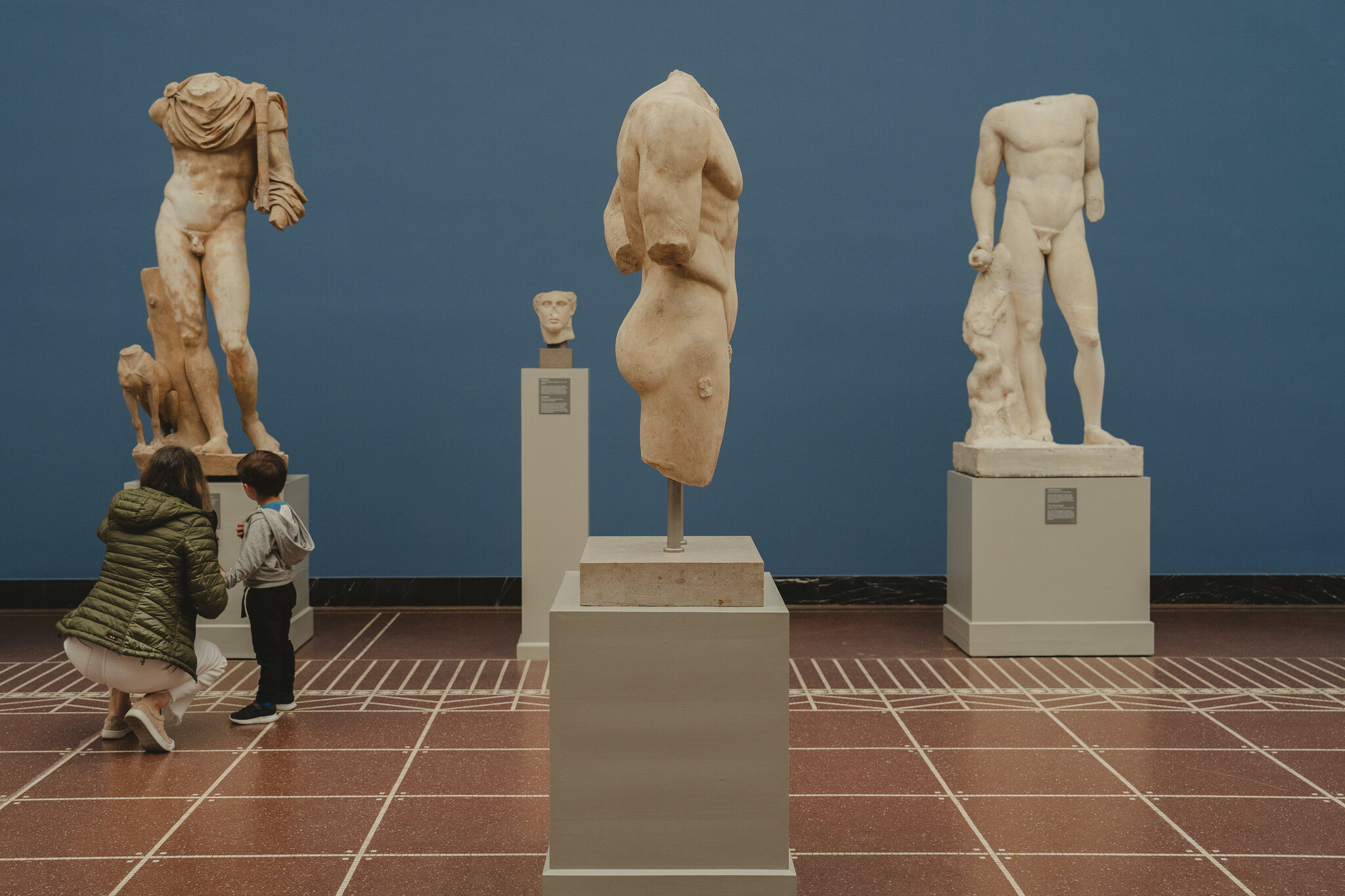


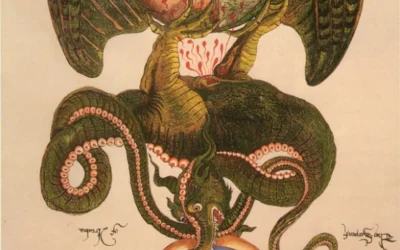

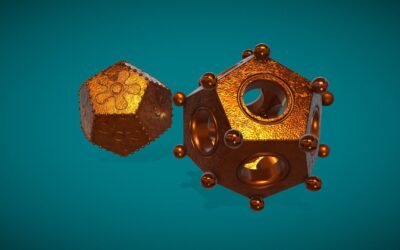
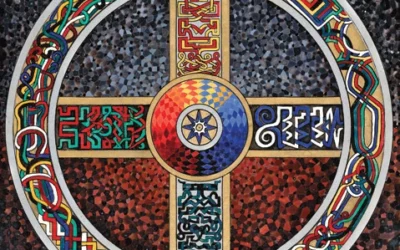
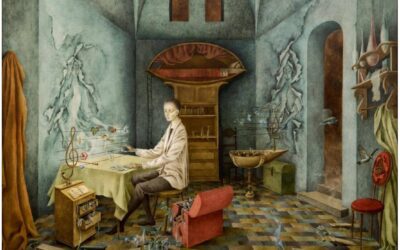
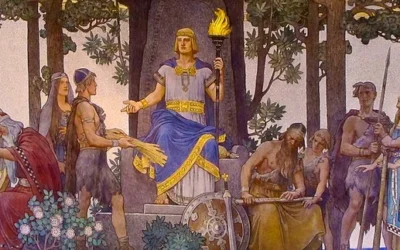
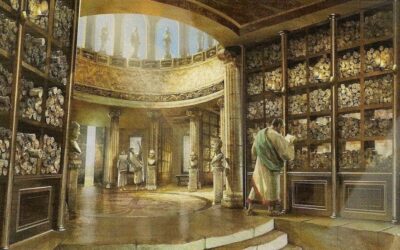
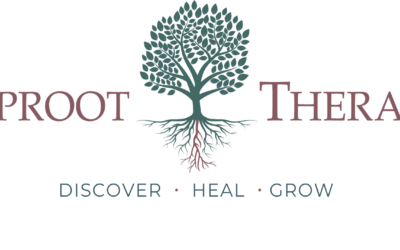
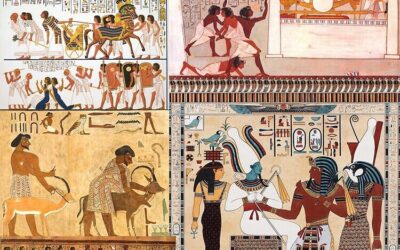
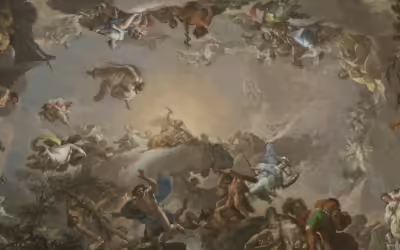
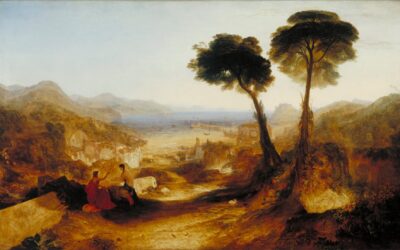

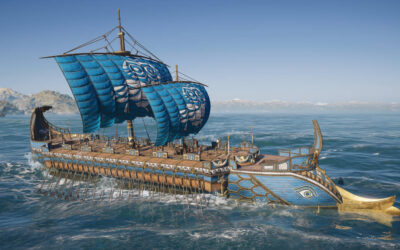

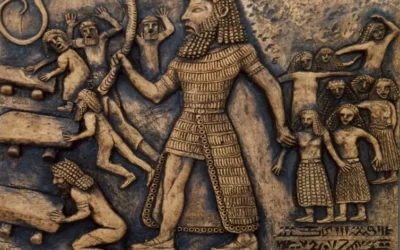

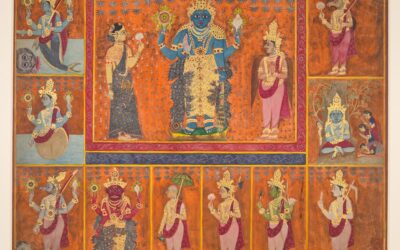
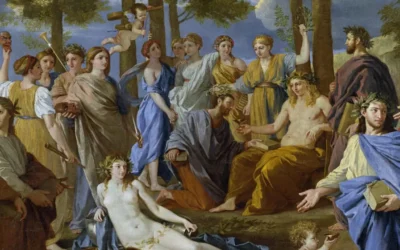
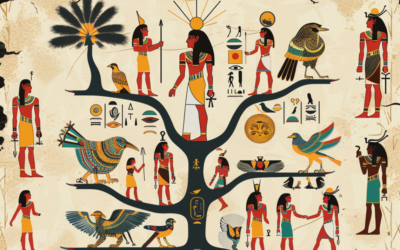
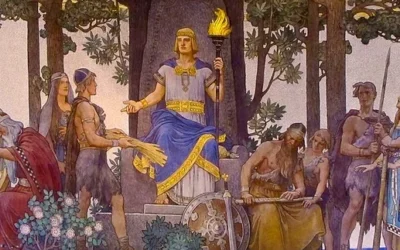
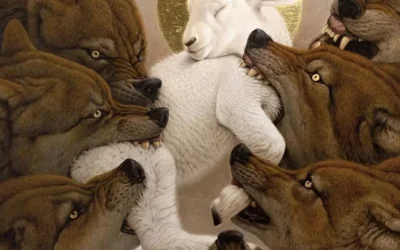
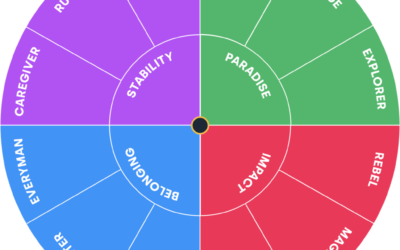
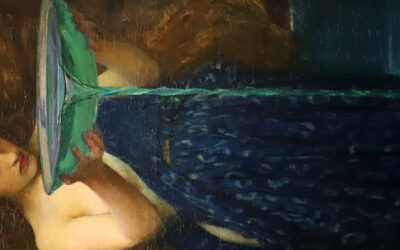
0 Comments